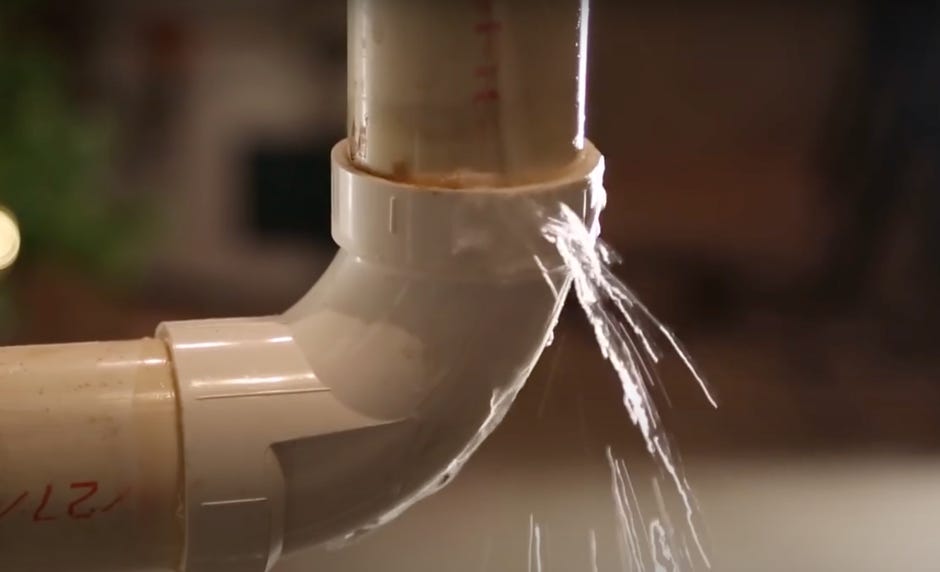Recognizing and Rapidly Repairing a Burst Pipe: A Guide
Recognizing and Rapidly Repairing a Burst Pipe: A Guide
Blog Article
Were you interested in help and advice on What to Know Before Installing a Dishwasher?

A burst pipeline is a major emergency; you can just stand as you watch water you pay very much to reunite with the earth. In even worse instances, you notice a swimming pool on your kitchen flooring, which is a great journey hazard, especially if you have youngsters around. If the pipe that burst remained in your walls, problem: you might need to paint that whole area.
Just how can a disaster like a ruptured pipe be stopped and also handled? Well, by paying attention to your professional emergency plumbings and complying with these regulations.
How do I understand when my pipelines have ruptured?
Varying water pressures
Pipelines do not simply burst in a day. You may have seen that your cooking area tap or shower does not run promptly when you turn the tap. It may pause for a couple of secs and after that blast you with even more force than common.
In other circumstances, the water might seem typical at first, after that decrease in pressure after a couple of seconds.
Damp walls and water spots
Before a pipeline bursts, it will certainly leak, a lot of times. If this relentless leaking goes unnoticed, the leakage might graduate into a large gouge in your pipeline. One very easy way to avoid this emergency is to watch out for damp wall surfaces ad water spots. These water discolorations will certainly lead you right to the leak.
Puddles under pipes and also sinks
When a pipeline ruptureds, the outflow forms a puddle. It might show up that the pool is growing in size, as well as despite the amount of times you mop the puddle, in a few minutes, there's one more one waiting to be cleansed. Usually, you may not be able to trace the pool to any kind of noticeable pipelines. This is an indicator to call a professional plumber.
Untraceable dripping noises
Pipe ruptureds can occur in one of the most undesirable areas, like within concrete, inside wall surfaces, or under sinks. When your house goes quiet, you might have the ability to listen to an annoyingly persistent dripping noise. Even after you've checked your shower head and kitchen tap, the dripping may continue.
Dear reader, the dripping may be coming from a pipeline inside your wall surfaces. There isn't much you can do concerning that, other than inform a specialist plumber.
Shut down the Water
When water ices up, it increases in quantity by regarding 9 percent. As well as it expands with remarkable force: The pressure inside pipelines might go from 40 pounds per square inch to 40,000 psi! No pipe can hold that much pressure, so it bursts. The break might occur where the ice types, but more frequently, it takes place where water stress finds a weak point in the pipe. That may be inches and even feet from the icy area. Find the water shutoff valve and also shut off the water to prevent even more damage. You could likewise need to shut down the electrical energy as well, relying on where the leaks takes place as well as how huge it is.
Contaminated water
Many individuals presume a burst pipeline is a one-way outlet. Fairly the contrary. As water spurts of the hole or tear in your plumbing system, pollutants locate their method.
Your water might be contaminated from the resource, so if you can, examine if your water tank has any problems. However, if your alcohol consumption water is supplied and detoxified by the local government, you need to call your plumber instantly if you see or scent anything amusing in your water.
What do I do when I detect a burst pipeline?
Your water meter will remain to run even while your water wastes. To minimize your losses, locate the main controls and turn the supply off. The water mains are an above-ground framework at the edge of your residential or commercial property.
How to Fix & Detect a Leaking Pipe
How Do I Know if a Pipe is Leaking?
Leak detection tests can help you determine if your pipe has a leak. Even if you don’t see an apparent leak, you should still conduct leak detection tests regularly to save water and money—and prevent major damage to your home.
Water meter. It can be helpful to figure out what your usual water meter usage numbers are and then monitor them regularly. To monitor your meter, first, turn off all water faucets in your home. Check the meter and write down the numbers. In a few hours, check the meter again. If the numbers have changed, you have a leak. Water gauge. Use a water gauge to test your water pressure. Your showerhead should produce a certain amount of water pressure based on its model and design. If the pressure is lower than it is supposed to be for that specific showerhead, your home likely has a leak. Puddles. Look inside your bathroom, laundry, and kitchen sink cabinets. Puddles around the cabinets or around toilets, tubs, showers, and washing machines indicate the presence of a leaking pipe. You may also notice loose tiles, peeling or flaking paint, or mold caused by water accumulation. Napkin test. Even if you don’t see any puddles, you may still have a leak. You can test for water leaks in the bathroom, laundry, and kitchen by wiping below-sink connections with a napkin, paper towel, or piece of toilet paper. If it becomes damp, you probably have a leaking pipe under the sink. Discolored walls. Walls that are discolored—usually with brown or yellow stains—or bulging might mean that they have been impacted by water damage caused by a leaking pipe. Smell. A leaky pipe will create sitting water, and over time, that water may develop a musty smell. If your home smells musty, but you can’t locate the source, it may be due to a leak. Steps for Fixing a Leaking Pipe
A leaky drain can be remedied by tightening the pipe base, replacing the drain seal, caulking the rim, and tightening the pipe nut. Similarly, a leaking toilet pipe can be treated by tightening the packing nut. You may also need to replace the valve. A leaky faucet may just need tightening or replacement of the washers. If that doesn’t work, consider replacing your faucet. If your pipe has a hole in it, you may want to use a pipe leak sealer or pipe leak tape. This quick fix for water pipe leaks can also temporarily fix a copper pipe leak. https://www.ahs.com/home-matters/quick-tips/how-to-tell-if-pipes-are-leaking/

As a fervent person who reads on How to Prepare for Your Dishwasher Installation, I assumed sharing that piece of content was smart. Are you aware of somebody who is serious about What to Know Before Installing a Dishwasher? Why not share it. Thanks so much for taking the time to read it.
See Availability Report this page